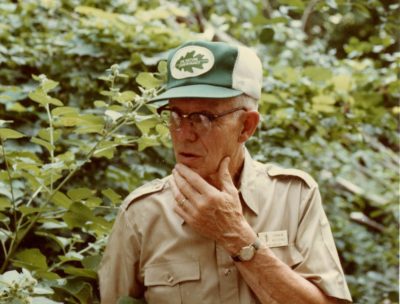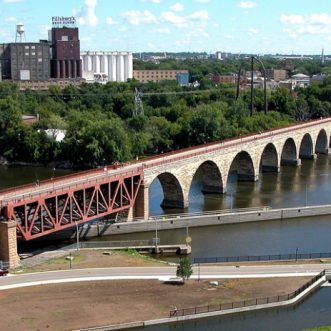…
Forest Therapy Walk: Improved mental health. Lower stress levels. Heightened immune response. Deep gratitude. A renewed connection with creation and Creator. Through a series of invitations designed to boost your senses and evoke discovery, the ANFT-certified Jerad Morey will guide you on a Forest Therapy Walk. Past participants have called their experience “transformative,” “meaningful,” and “spiritual” and reported feelings of refreshment, relaxation, and peace.
A Forest Therapy Walk is not an extended hike – you will not be huffing and puffing or racking up your step count – but you will be invited to traverse unpaved and uneven ground. Please bring a full water bottle and dress appropriately for a few hours in the weather including sunscreen, bug deterrent, a portable chair or clothes in which you can sit on the ground, and shoes in which you can walk off-trail.
…
Rice County Before Europeans
Before Europeans came, the land that is now known as Faribault, Minnesota, was an area of virgin prairie and forest. The Wahpekute band of the Dakota settled here around the time of the first European fur traders.
In 1826, Alexander Faribault came to what we know as Rice County and began to trade with the Wahpekute on the Cannon River. By 1834 he established a permanent settlement. He convinced the Wahpekute in the village along Cannon Lake to move to the site of Faribault.
In 1851, as a result of the Treaty of Mendota, most of the Wahpekute were moved to a reservation; however, a number of them remained in Faribault, living on Alexander Faribault’s land.
Several places still exist in Faribault where one can observe evidence of the Wahpekute’s presence in Rice County, and at River Bend Nature Center specifically, it is supposed that some of the Dakota people may have lived where Rustad Road is today. A rock considered sacred by the Wahpekute, known as Inyan Tonka, which means ‘Big Rock,’ is located on a small island in the Straight River about three miles upstream from where the dam at the Faribault Regional Center used to be.
…

…
Faribault Regional Center
The land was eventually divided up among farmers. In 1889, dairy farmer G.M. Gilmore sold his farm and another small tract of land near the School for the Feeble-Minded (most recently called the Faribault Regional Center or FRC) to the trustees of the State Institution. The land was to be farmed by the residents of the FRC to serve as a therapeutic activity. The produce was to be used to support the hospital’s population. 726 acres of the land eventually became today’s River Bend Nature Center.
From the late 1800’s to the late 1960’s the farm included a wide variety of operations, such as a dairy farm, piggery, quarry, and numerous vegetable gardens. About 24 residents worked in the dairy operation, 20 on the general farm, 12 in the piggery, and 40-80 in the vegetable gardens.
Springdale Cottage, located where the Arbor Trail loop is today, was where most of the residents who worked on the farm lived and the hub from which farming activities radiated. A fire hydrant and sidewalk remnant located off the trail are the few remaining signs of this building.
Vegetables harvested included berries, peppers, tomatoes, pumpkins, lettuce, celery, and potatoes. Much of these fruits and vegetables were canned to be eaten throughout the year. Evidence of disposed tin cans can still be found to the east of Walnut trail at River Bend.
Evidence of the quarry from which limestone was mined can be seen to the southwest of River Bend’s Trailside building. The limestone was taken up to the FRC, where it was crushed to use in concrete for laying some of the early sidewalks.
The old dairy was located along today’s Rustad Road. When the dairy operation began, about 70 cows supplied the milk necessary for the FRC, as well as other institutions. The piggery was also operated along Rustad Road. About 22 hogs were butchered each week.
Much of what is River Bend’s prairie today was pasture for cattle and hogs and was later cornfields. A new dairy was built, located in an area called Peaceful Valley, on today’s Dairy Lane. The dairy barn still standing was built in 1955 after the original barn burned to the ground.
The operation of the farm eventually became less economical. All farming operations were discontinued on July 1, 1969. From 1969 to 1978 no large-scale land management plans were followed, with the exception of some of the land being used as cornfields.
…
doitinnorth shop/share gallery

Forest Therapy Journal, A Companion For Guided or Solo
…
River Bend Nature Center
The history of River Bend began with the creation of the Faribault Area Committee for Environmental Quality (FACE-Q), which was organized to “preserve and protect the natural resources of the Faribault area.” In 1973 FACE-Q was reorganized as the Faribault Naturalist Club, members of which became the core River Bend Nature Center membership.
Orwin Rustad, a teacher at Shattuck-St. Mary’s School, had a dream of establishing a nature center. This dream began to seem like a possibility when it was suggested that the creation of a nature center could serve as part of the Bicentennial Celebration. On December 23, 1975 the Faribault City Council passed a resolution endorsing the idea of a “Nature and Agricultural Interpretive Center.”
The Land Acquisition Committee recommended that steps be taken to acquire 487 acres of the FRC land. After two and a half years of effort, the Land Bill was passed, which deeded to the City of Faribault the state lands to be sold for a nature center for $1. After permanent corner markers were set, in August of 1978, Rustad and others began staking the nature trails.
The name of River Bend was decided upon in 1979 in part to recognize the Great Bend of the Straight River as early Wahpekute described it. The Grand Opening and Dedication of RBNC and the completion of the Trailside Center occurred on September 21, 1980. Over time River Bend accumulated more land until about 743 acres were owned. The groundbreaking ceremony for the new interpretive center came on July 2, 1991, and the first day of business in the new interpretive center occurred on December 2, 1991. River Bend’s close collaboration with the Faribault school district to provide environmental education for children was designed from the beginning. River Bend Nature Center is committed to helping people discover, enjoy, understand, and preserve the natural world.
…
River Bend Nature Center is an independent, membership supported, nonprofit 501(c)(3) organization. Supported by and committed to serving the community, River Bend aspires to be a vital asset to the region and its people.
…
Event Details
ICYMI
Twin City Model Railroad Museums ‘Circus-Train’ Month – St. Paul, MN







